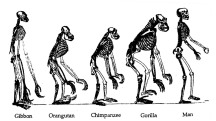By Forensic anthropology, we apply the science of physical anthropology (studies the physical development of the human species) and human osteology in a legal setting. Forensic anthropology is most commonly used when the victim remains undergo advanced stages of decomposition.
Facial reconstruction is a method
used in forensic anthropology to recreate the face of a person from their
skeletal remains. This method is a combination of both scientific and artistic
approaches to determine the identification of the individual.
Reconstruction in clay is a common
process used in facial reconstruction. Creative artists are needed to know the
depth of skin and muscles that overlay the skull.
During
reconstruction of facial features, the sculptor needs to follow a set of
guidelines in order to reproduce a life-like face. For example, ears are known
to be around the same length as the nose.
However, there are limitations to
the accuracy of reconstruction. Certain features like hairstyles can only be
guessed. It may however help narrow down a search by excluding people who do
not resemble the reconstructed face.
There are many other forensic anthropological
techniques can be used in the recovery and analysis of human
remains to help investigators uncover more details about the dead body. We are
very grateful to have such an advance technology that may assist us in
identifying a person from his dead remains.
Besides, fingerprints are folds of the epidermis of the skin. These folds can vary in length and width and can join together to form different patterns. Fingerprint matching is the process used to determine the identity of the victim.
Other than that, Carbon 14 bomb pulse dating can be used to identify the victim by examining the carbon 14 levels in the victim’s hair to determine his age and time of death.
Stable isotope analysis can be done by examining the varying weights of the same element (oxygen and hydrogen) from bones, hair, and teeth. It can tell a person’s environment and geographical origins by correlating the isotopes level of oxygen and hydrogen.

Furthermore, Forensic Geology can be perform in this case to deal with trace evidence relating to minerals, soil, petroleum, and other materials found in the Earth.









Good job, you have covered most areas!
ReplyDelete